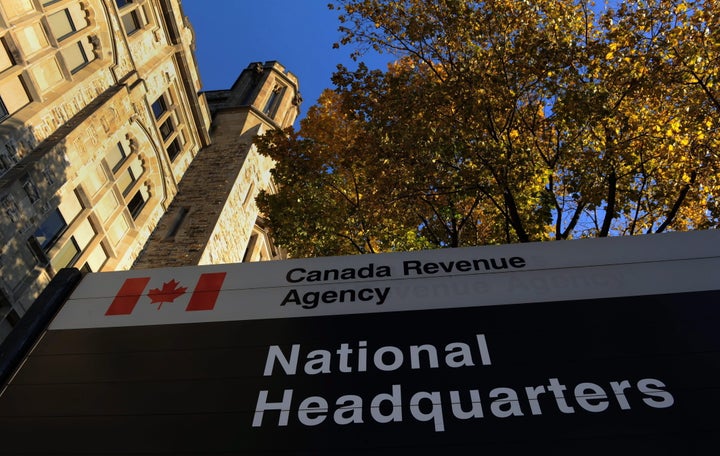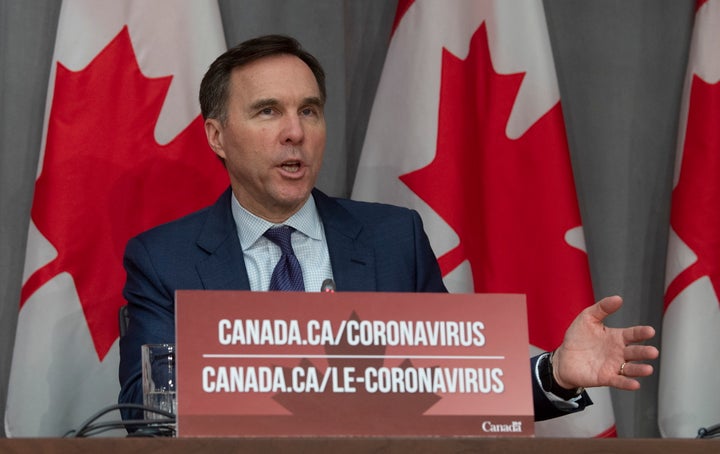Justin Trudeau’s federal government rolled out more details on the Canada Emergency Wage Subsidy (CEWS) Tuesday, the latest financial aid program introduced in response to the COVID-19 pandemic.
The wage subsidy is designed to pay employers impacted by the COVID-19 pandemic 75 per cent of an employee’s wages for up to 12 weeks, retroactive from March 15, 2020, to June 6, 2020.
It’s a multibillion-dollar program, and officials expect hundreds of thousands of applications from businesses of all sizes.

In a statement Tuesday, Minister of National Revenue Diane Lebouthillier said the Canada Revenue Agency (CRA) is prepared to handle the influx of applications.
“I am confident in the CRA’s ability to administer this critical fiscal measure that will provide urgently needed support for Canadian employers and workers,” she said.
But as the CRA braces for hundreds of thousands of applications, what do you need to know about the subsidy as a worker or employer? And when will you actually get the money?
Here are your questions about the new federal wage subsidy, answered.
OK, so how does it work?
The Canada Emergency Wage Subsidy (CEWS) is a program that will pay out a percentage of employees’ wages to employers, with the intention of keeping those employees working and the economy rolling.
The subsidy, paid out by the government, covers up to 75 per cent of an employee’s wages and will be administered in three four-week periods: March 15 to April 11, April 12 to May 9, and May 10 to June 6, for a total of up to 12 weeks’ worth of wages covered.
Businesses can apply starting on April 27, and the government expects to start sending out money around May 5. While applications can be retroactive, the subsidy money must be claimed by October 2020.
Who gets this money?
The money will be distributed through direct deposit or cheque directly to businesses — depending on how they are registered with the CRA — and the business will use it to pay employees in the form of wages.
What businesses qualify?
Businesses that have lost at least 15 per cent of their revenue from March 15 to April 11 and 30 per cent of their revenue from April 12 to May 9 and May 10 to June 6 due to the pandemic will qualify for the subsidy.
The subsidy covers a variety of business types from large taxable corporations to non-profits to registered charities. Government officials have said they designed it to be as widely encompassing as possible with the intent of keeping people employed.
“For people to get through this tough time and for the economy to rebound, people have to keep their jobs,” Trudeau said earlier this month when announcing details of the subsidy.
“For people to get through this tough time and for the economy to rebound, people have to keep their jobs.”
- Prime Minister Justin Trudeau
Deputy Prime Minister Chrystia Freeland said it was designed to cover as many types of businesses as possible.
“We understand that coronavirus and the economic impact of coronavirus does not make any distinction between small companies, medium companies, large companies,” she said.
Officials did note that large companies may be subject to additional reviews of their applications before funds are disbursed.
How can businesses apply?
Businesses can apply through their CRA My Business Account or through an online form that will be posted to the government website after applications open.
All applications submitted between April 27 and May 4 will not be processed until May 5, so government officials are encouraging folks to not rush to apply as soon as the portal opens.

The government is also recommending businesses use the CEWS online calculator before applying to ensure they submit their application properly. You can access the calculator here. If you’ve already used the calculator, the application itself should only take a few minutes.
The calculator was designed with input from business representatives, including the Canadian Federation of Independent Business (CFIB).
“The Canada Emergency Wage Subsidy will help many small business owners keep their employees during the COVID-19 pandemic,” CFIB president Dan Kelly said in a statement Tuesday. “This will remove the stress of losing a job for workers and allow employers to bring their teams back together quickly as soon as the emergency phase is over.”
I’m a business owner — how do I know how much I’ll get per employee?
The CEWS calculator should be able to tell you that. The wage subsidy covers 75 per cent of an employee’s normal wages up to $847 per week.
There’s no limit on the total amount or number of employees an individual business can claim through the subsidy.

I’m an employee — is my employer required to pay me the other 25 per cent?
No stipulations within the CEWS require that the employer pay the extra 25 per cent of wages, but government officials are encouraging it.
During an announcement earlier this month, Trudeau said that while he recognizes particularly hard-hit employers may not be able to pay the difference, businesses should work hard to pay employees their full wages.
“We are trusting you to do the right thing. If you have the means to pay the remaining 25 per cent that’s not covered by the subsidy, please do so,” Trudeau said.
Can I receive the wage subsidy and the CERB at the same time?
In almost every case: no. The CERB requires you to be out of work or earning less than $1,000 a month in order to receive the monthly $2,000 payment. So if you’re hired back and make more than $1,000 a month, you no longer qualify for the CERB.
“We are trusting you to do the right thing.”
- Prime Minister Justin Trudeau
If you were laid off and applied for and received the CERB, and then your employer retroactively rehired you through the wage subsidy, you may have to actually return the $2,000 CERB payment to the government.
Officials said they are still ironing out the kinks on how and when people will be forced to return CERB money if they are retroactively rehired. But they said future CERB payment period applications will include information and warnings that this could occur.
Can I cheat?
Trudeau has said there will be harsh penalties for businesses caught trying to fudge the numbers or cheat the system.
“If you think this is a system you can take advantage of or game, don’t. There will be serious consequences for those who do,” he said.
Large businesses in particular will be under scrutiny for their initial applications. And applications could be subject to a post-audit by the CRA if necessary.
While like the CERB, most applications will be processed digitally, the government has brought in more than 3,000 auditors to work on application verification.
Also on HuffPost: